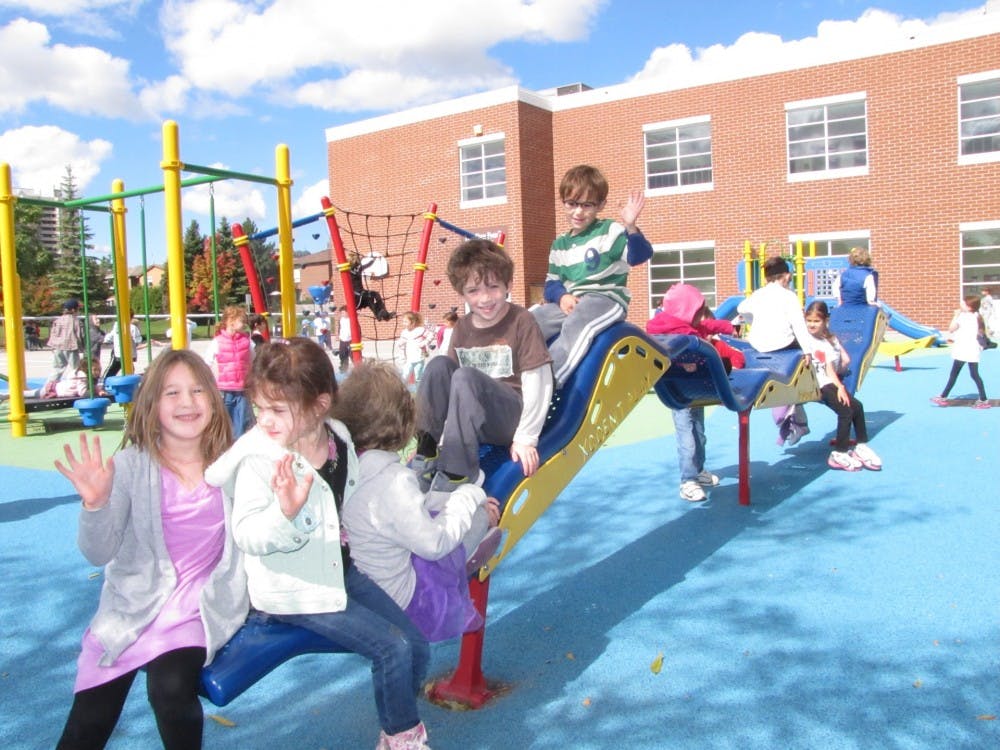In modern society, children have begun to spend substantially more time indoors than outside in the fresh air. Recent studies have shown that children between the ages of 8 and 12 spend three times as much time inside with screens than they do playing outside. This is a significant change from the amount of time spent outside when these children’s parents were their age. Children now spend on average just four hours a week outside, while their parent’s generation as children spent an average of 8.2 hours outside.
Being cooped up inside poses a number of health risks for children. It can lead to a Vitamin D deficiency, which is troubling considering it helps protect against conditions such as osteoporosis and some cancers. Without ample exposure to sunlight and fresh air, children are at a higher risk for succumbing to such conditions. Exposure to nature also helps to prevent against depression and negative thoughts. A simple outing has been shown to improve the mental state of people who have just experienced a stressful or traumatic life event such as the death of a loved one.
Research has also demonstrated that exposure to the natural light that coincides with spending time outside can improve sleeping habits. The sleeping habits of children is a major concern, as studies have shown that children and teenagers are increasingly getting less sleep than is healthy. From 2009 to 2018, the proportion of high school students that were reportedly not getting enough sleep increased from 69 percent to 73 percent. As children spend less time outside, it seems that this trend of an increasing lack of sleep will continue. Lack of sleep in children and teenagers poses many health risks — depression, aggression and anxiety are among these risks. Lack of sleep additionally impedes a child's education because it can lead to a decreased attention span, memory loss and school disciplinary problems.
Along with the academic improvements caused by proper sleeping habits, spending time outside has other positive effects on education. For one, learning outside enhances a student’s concentration, which is incredibly beneficial for students with ADHD, which affects 6.1 million children and adolescents. Furthermore, spending time outside boosts children’s executive functioning through teamwork activities and interactions with nature. This aids in the development of a kid’s creativity and imagination skills, both of which are important in education.
Outdoor learning also improves retention, since nature acts as a soft backdrop and invokes attention restoration . Additionally, the light provided by outdoor learning is incredibly beneficial for young people. Students who learn in natural lighting have been shown to get standardized test scores that are 25 percent higher than students in dimly lit classrooms. Along the same lines, reading in dim lighting tires out your eyes faster, making it harder to read for long periods of time.
On top of all of the above benefits, it is essential to note that being outside is fun for kids. As education becomes more fun, schools will see better attendance among students as they look forward to their classes — this will increase excited about learning and education as well.
In order to reap the health and educational benefits of outdoor learning, there are a number of ways in which educators and schools can move lessons outside. Activities such as school assemblies or other large gatherings can take place on a school athletic field rather than in a cramped auditorium. Science teachers can take advantage of their natural surroundings when teaching lessons about different things in nature.
Moreover, classes that are discussion or reading oriented can take place outside. The outdoors gives ample room for students to spread out or sit in a circle for classes in which students are encouraged to discuss and debate topics. Independent reading can be done with children sprawled out in the grass or sitting at picnic benches. Even classes that revolve around lecture and note taking can take place outside. Students can bring their notebooks outside and sit in outdoor seating areas such as benches or bleachers.
While I believe outdoor education is important, I don't expect schools to completely neglect traditional classroom settings. Some lessons require the visual aids that only screens and the internet can provide, and whiteboards are still effective in certain lessons. With that being said, educators should plan efficiently and spend as much time outside with their students as they can.
Outdoor education has many benefits, both health and educational, for students and is fairly easy to accomplish. Educators need to weigh the positive health attributes that nature has to offer to children, such as its improved sleep cycles and increased levels of vitamin D, along with the positive educational impacts, such as increased attention, creativity and information retention. Every school should prioritize their students by making the easy switch to outdoor education.
Valerie Speirs is a Viewpoint Writer for The Cavalier Daily. She can be reached at opinion@cavalierdaily.com.







